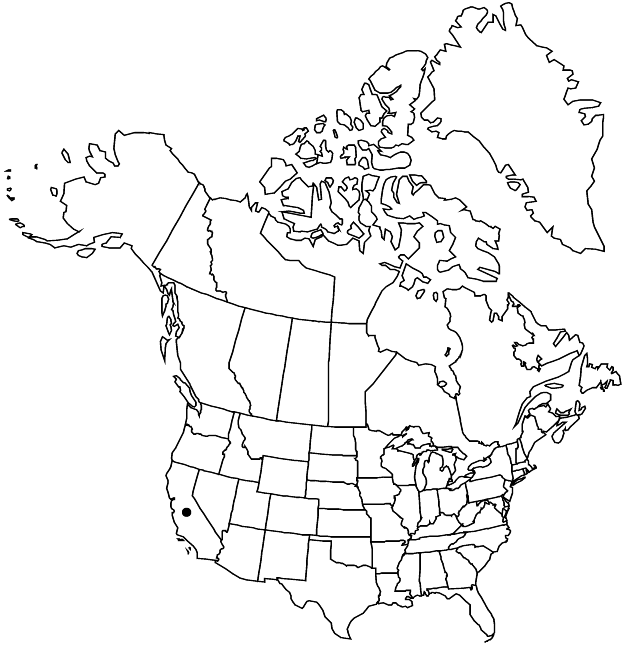Difference between revisions of "Arenaria paludicola"
Proc. Amer. Acad. Arts 29: 298. 1894.
FNA>Volume Importer |
imported>Volume Importer |
||
| (6 intermediate revisions by 2 users not shown) | |||
| Line 8: | Line 8: | ||
}} | }} | ||
|common_names=Marsh sandwort | |common_names=Marsh sandwort | ||
| − | |basionyms={{Treatment/ID/ | + | |special_status={{Treatment/ID/Special_status |
| + | |code=C | ||
| + | |label=Conservation concern | ||
| + | }} | ||
| + | |basionyms={{Treatment/ID/Basionym | ||
|name=Alsine palustris | |name=Alsine palustris | ||
|authority=Kellogg | |authority=Kellogg | ||
| + | |rank=species | ||
| + | |publication_title=Proc. Calif. Acad. Sci. | ||
| + | |publication_place=3: 61. 1863 (as palustre), | ||
}} | }} | ||
|synonyms={{Treatment/ID/Synonym | |synonyms={{Treatment/ID/Synonym | ||
|name=Minuartia paludicola | |name=Minuartia paludicola | ||
|authority=(B. L. Robinson) House | |authority=(B. L. Robinson) House | ||
| + | |rank=species | ||
}} | }} | ||
|hierarchy=Caryophyllaceae;Caryophyllaceae subfam. Alsinoideae;Arenaria;Arenaria paludicola | |hierarchy=Caryophyllaceae;Caryophyllaceae subfam. Alsinoideae;Arenaria;Arenaria paludicola | ||
| Line 31: | Line 39: | ||
|distribution=Calif.;c Mexico;Central America (Guatemala). | |distribution=Calif.;c Mexico;Central America (Guatemala). | ||
|discussion=<p>Of conservation concern.</p><!-- | |discussion=<p>Of conservation concern.</p><!-- | ||
| − | --><p>Arenaria paludicola is federally listed as endangered, and now is known only from a few sites in San Luis Obispo County; urban development and resultant habitat conversion have impacted it significantly. Historical collections of A. paludicola are known from other areas of the California coast and from Washington.</p><!-- | + | --><p><i>Arenaria paludicola</i> is federally listed as endangered, and now is known only from a few sites in San Luis Obispo County; urban development and resultant habitat conversion have impacted it significantly. Historical collections of <i>A. paludicola</i> are known from other areas of the California coast and from Washington.</p><!-- |
| − | --><p>Arenaria paludicola occurs also in Mexico, where it grows (and is sometimes confused) with A. bourgaei Hemsley in lakes and wet areas above 2000 meters; the relationship of these species to each other and to A. lanuginosa requires study.</p> | + | --><p><i>Arenaria paludicola</i> occurs also in Mexico, where it grows (and is sometimes confused) with A. bourgaei Hemsley in lakes and wet areas above 2000 meters; the relationship of these species to each other and to <i>A. lanuginosa</i> requires study.</p> |
|tables= | |tables= | ||
|references= | |references= | ||
| Line 41: | Line 49: | ||
-->{{#Taxon: | -->{{#Taxon: | ||
name=Arenaria paludicola | name=Arenaria paludicola | ||
| − | |||
|authority=B. L. Robinson | |authority=B. L. Robinson | ||
|rank=species | |rank=species | ||
| Line 55: | Line 62: | ||
|publication title=Proc. Amer. Acad. Arts | |publication title=Proc. Amer. Acad. Arts | ||
|publication year=1894 | |publication year=1894 | ||
| − | |special status= | + | |special status=Conservation concern |
| − | |source xml=https:// | + | |source xml=https://bitbucket.org/aafc-mbb/fna-data-curation/src/2e0870ddd59836b60bcf96646a41e87ea5a5943a/coarse_grained_fna_xml/V5/V5_109.xml |
|subfamily=Caryophyllaceae subfam. Alsinoideae | |subfamily=Caryophyllaceae subfam. Alsinoideae | ||
|genus=Arenaria | |genus=Arenaria | ||
Latest revision as of 22:08, 5 November 2020
Plants perennial, not matted. Taproots filiform; rhizomes slender, 15+ cm. Stems 5–15, weakly erect, green, 25–90 cm; internodes angular to grooved, 2/3–3 times as long as leaves, shiny, glabrous except for fine hairs at nodes. Leaves connate basally, with scarious sheath 0.2–0.5 mm, sessile; blade 1-veined (vein prominent abaxially), linear to linear-lanceolate, 20–55 × 2–7 mm, herbaceous to subsucculent, margins ± flat, scarious, shiny, ciliate, apex acute or acuminate to cuspidate, sometimes pustulate, sparsely pubescent on adaxial surface; axillary leaf clusters absent. Inflorescences axillary, solitary flowers. Pedicels reflexed in fruit, 20–50 mm, glabrous. Flowers: sepals green, obscurely 1-veined, not keeled, broadly elliptic (herbaceous portion narrowly elliptic), 2.8–3.5 mm, to ca. 4 mm in fruit, apex obtuse to rounded, not pustulate, minutely ciliate basally; petals ovate, 5–6 mm, 11/2–2 times as long as sepals, apex rounded. Capsules tightly enclosed by calyx, ovoid, 4 mm, ca. equaling sepals. Seeds 15–20, dark brown, reniform, compressed, 0.8–0.9 mm, shiny, smooth.
Phenology: Flowering late spring–summer.
Habitat: Boggy meadows, freshwater marshes
Elevation: 0-300 m
Distribution

Calif., c Mexico, Central America (Guatemala).
Discussion
Of conservation concern.
Arenaria paludicola is federally listed as endangered, and now is known only from a few sites in San Luis Obispo County; urban development and resultant habitat conversion have impacted it significantly. Historical collections of A. paludicola are known from other areas of the California coast and from Washington.
Arenaria paludicola occurs also in Mexico, where it grows (and is sometimes confused) with A. bourgaei Hemsley in lakes and wet areas above 2000 meters; the relationship of these species to each other and to A. lanuginosa requires study.
Selected References
None.